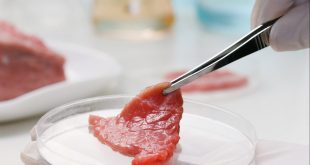Goals to reduce carbon footprint from operations are influencing a shift in supply chain strategy among Canada’s food and beverage industries
By Sean Tarry
The global supply chain has certainly come under a considerable amount of scrutiny over the course of the past two or three years following a raft of port closures and delays, rising costs and fees, and a general lack of reliability and predictability. It’s forcing most companies operating in just about every industry and sector around the world to assess the state of their current supply chains and make the necessary tweaks in order to reduce costs and find greater efficiencies. However, according to the Food Professor, Dr. Sylvain Charlebois, although these tweaks are being made, a growing desire among those operating within the food and beverage industries to improve their environmental footprint is increasingly driving many of their supply chain strategies.
“The Canadian food supply chain in Canada, generally speaking, is performing much better than it was this time last year with far less significant delays,” he asserts. “And, as improvements are made, many within the industry are starting to place quite a bit of focus on optimizing and decarbonizing everything about their operations. Both aspects are being valued by most companies as equally important to the other. Optimizing, or building efficiencies, is very much about planning the use of automation and artificial intelligence. In terms of managing the procurement of product and ingredients, the just-in-time and just-in-case models are frequently being improved and enhanced. And, many are also starting to leverage near-shoring more, all in an effort to decarbonize their supply chain, redefining the operations of companies all over the world.”
Middle mile opportunities
Charlebois goes on to explain that given regulatory legislation and associated penalties that exist in different regions and jurisdictions across the country, businesses are putting a concerted effort toward minimizing and, where possible, altogether eliminating the impact that their operations have on the environment. And, of course, their transportation and logistics needs represent a massive portion of their carbon footprint, making it something of low-hanging environmental sustainability fruit. However, explains the Food Professor, there are a number of significant challenges that are currently preventing greater progress and reduction of emissions.
“When you look at the domestic Canadian market, the middle mile is the piece of the supply chain that can be tightened up and improved most dramatically,” he suggests. “People have been saying for a very long time that the most expensive mile is the last mile. And that may be true. But the middle mile, which is a critical one, is where the greatest improvements can be made from an environmental point-of-view as well as the perspective of reducing costs. Food businesses will increase their competitive advantage significantly by investing in the activity that takes place between the warehouse and retail store, electrifying it, and making warehouses leaner from an environmental perspective. Because when you’re operating in a country as vast as Canada where there really isn’t any population density, you’ve got to make sure that the middle mile is managed as thoughtfully and strategically as possible.”
The promise of technology
Depending on the type of food or beverage company, and the nature and structure of their supply chains, explains Charlebois, there are a range of practices and initiatives that can be developed and instituted in order to make some of these environmental and financial gains. However, he suggests that the one tool that can and should be leverage by all when looking to create a leaner middle mile for their supply chains, is that of technology.
“Technology, data most specifically, is incredibly important to businesses today when it comes to managing their supply chains,” he says. “And it continues to increase in relevance. If you can utilize artificial intelligence to better forecast and predict consumers’ behaviour and food choices based on an innumerable amount of variables, you can better tool stores, warehouses and overall operations for greater efficiency. It’s becoming imperative for businesses to leverage these tools and this type of technology in order to remain in-the-know with respect to what the consumer is doing and, more importantly, what they’re going to do next. Those that are able to take advantage of the tools that exist today to get ahead of their customers will also get ahead of their competition.”
Moving forward
Not only can data be harnessed internally to find the efficiencies that businesses are looking for, Charlebois says that it can, and should, be shared with trusted partners within their supply chains, explaining that a combination of retailer, manufacturer and distributor data can help all parties involved improve their footprints and operational performance. However, he adds that looking ahead over the course of the next 12 to 18 months or so, the biggest challenge for any business operating within the Canadian food or beverage industries will be in finding ways to use the data that they have at their disposal to better service the needs of Canadians across the country.
“The data that businesses have access to now is more precise, and therefore more powerful, than it was three years ago. It’s going to be interesting to see how companies within the Canadian food ecosystem leverage it to improve the way they serve people in urban centres as opposed to those in suburban and rural communities. The relationship that Canadians have with food, and the ways they acquire it, has changed dramatically over the past few years, and will continue to change and evolve moving forward. Those that understand this and can figure out how to most efficiently service these different types of areas, while maintaining reductions in their carbon footprints, will separate themselves from their competitors.”
 Canadian Food Business
Canadian Food Business




